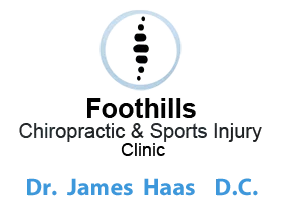Opioids
The Center for Disease Control and Prevention (CDC) is trying to control the United States epidemic overuse of pain killers. The CDC has issued new guidelines for the prescribing of Opioids for chronic pain. They encourage doctors to use all conservative forms of pain management before prescribing Opioids. Chiropractic and Acupuncture should be the first approach to treating pain. Dr. Greg Crawford DC practicing in Fort Collins, Colorado has almost 30 years of experience treating pain using conservative treatments. Chiropractic adjustments, acupuncture, interferential muscle stimulation and massage therapy are safe, effective treatments for both acute pain and chronic pain.
On average, 20 to 25 Colorado citizens overdose on opioids every single day. 2 to 3 of those opioid users die each day in Colorado. 9 of every 10 Colorado medical doctors are not complying with the CDC’s 2016 guidelines for prescribing opioids. OpiSafe is a new resource doctors can use to comply with national opioid guidelines.
The Colorado Department of Healthcare Policy is following the Colorado Governor’s task force’s mission to reduce the misuse of prescription opioids. Most believe that their recommendations are considerably too liberal. They ask to limit short acting opioids to a maximum of 120 tablets per 30 days. One of Colorado’s largest worker’s compensation insurers has asked their network providers to limit opioid prescriptions to 30 tablets. Many doctors consider this to be excessive as well and call for tighter guidelines.
The protocol for opioid use is a hotly debated subject with a wide range of opinions. In the past, many doctors believed that chronic pain was under treated. This has led to a gross over prescribing of opioids medications. Patients need to be screened for the risk of addiction. The doctor should consult with the prescription drug monitoring program to verify all medications the patient is taking before prescribing opioids. Many other drugs, when combined with opioids, can be fatal. The general consensus of Colorado prescribing boards is that opioid dose of greater than 120 mg morphine equivalents per day is dangerous for the average adult and may lead to unintended death.
Benzodiazepines are known to increase the sedative effects of opioids and dramatically increase the risk of acute respiratory distress syndrome and death. Opioid treatment exceeding 90 days may no longer be effective for pain relief. The opioid addition and over-dose problem is due to an upregulation of the patient’s pain receptors. Chronic use of opioid medication increase the patient’s tolerance to the medication and the pain relieving effect diminishes. The doctor then increases the prescription dose to achieve relief. This relief is short term as the patient again loses sensitivity to the opioids and the doctor again increases their opioid dosage. In some cases the dosage gets so high the doctor cannot increase the dosage for fear of an over dose. At the maximum dosage, the patient still may not get relief from their pain. The patient’s pain sensitivity has been increased by the opioids and they no longer control the patient’s pain. At this point, many patients demand a higher strength opioid. When the doctor is unable to prescribe any more medication the patient often becomes desperate. Frequently the chronic opioid addicted patient turns to the street to buy heroin to control their pain. It is estimated that 8 out of 10 heroin addicts climbed the opioid prescription ladder to the top and became a heroin addict as a result.
The Colorado opioid addiction and overdose problem has clearly been made worse by excessive prescriptions. Many lives have been destroyed or severely damaged by prescription opioids. The medical community is finally waking up to the fact that opioid prescriptions should be short term, low dose and confined to a very small select group of conditions such as, acute fractures, major surgeries, and pain due to cancer. Patients with acute and chronic pain should be treated with conservative treatment first. Exercise, acupuncture, and chiropractic manipulation should be the first choices for the treatment of headaches, neck and back pain.
